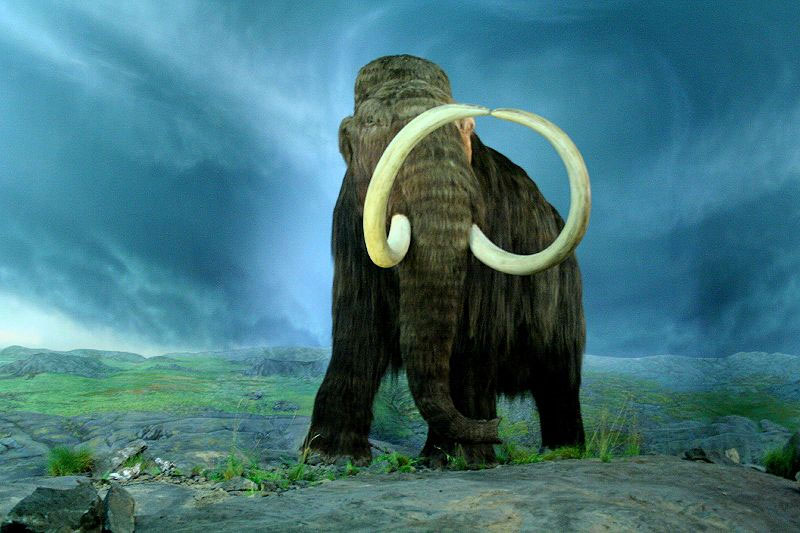Mammals extinct due to the effects of climate change and humans
Scientists working at the University of Sydney, Australia, said that both climate change and people are responsible for the extinction of large mammal populations, present more than 50,000 years ago. in the Ice Age , even special animals such as rhinos with feathers and mammoths.
The results of this study were published in the journal Nature.
"We have found that large mammal species have become extinct during the ice age, strongly influenced by changes in climate and habitat, which increases concerns about the impact of future climate change on the current large size animals, " said Dr. Simon Ho, working at the Department of Biological Sciences, University of Sydney, Australia. .
For decades, scientists have been discussing the reasons behind the mysterious mass extinction of the Late Quaternary (Quaternary), causing the loss of: one-third of species large mammal mammals in Eurasia; 2/3 of species in North America, and nearly 90% of large mammals and birds in Australia. In particular, the role of climate change and people in promoting extinction is still controversial.

To troubleshoot the processes below the extinction of these large-sized animals, researchers combine word information: ancient DNA, climate data, and archaeological records to check Investigating the extinction of 6 herbivorous mammals, including: rhino with fluff, mammoth, wild horse, reindeer, bison and musk.
The results show that it is unambiguous: only climate or human presence is responsible for the extinction of the late Quaternary mammals. (Quaternary); Because every different mammal species reacts very differently to the effects of climate change, habitat and people.
"Our research results are more complex than our previous thinking. Our research shows that: people do not participate in the effects that lead to extinction: rhinos have fluff or crawling on the Eurasian continent and their disappearance is due to the effects of climate change, " said Dr. Simon Ho.
"However, the human impact is undeniable when it comes to the extinction of wild horses and bison in the Xibri region. Although climate change also contributes to this extinction, the ancestors of we have also shared responsibility for the extinction of large mammals, although the reindeer is relatively unaffected by one of these factors, the causes of extinction. The black-haired mammoth is still a mystery ".
"Our findings shed light on the reasons for the extinction in the Ice Age, and suggest that there should be general causes, which are not only related to extinction of the species in the past but also related to the future of mammal species in the present, depending on how people view: the impact of climate change and people on the extinction of mammals, " according to Eske Willerslev, head of research, working at the University of Copenhagen, Denmark.
Since it is not possible to compare the data analyzed in this study, the authors could not find a clear pattern that distinguishes between extinct species such as: rhino with feathers and mammoths; with surviving species such as wild horses in Eurasia and reindeer in North America; This is a challenge for experts to predict how modern mammal species will react to the impact of global climate change in the future.
- Other mating species makes white bears extinct
- The first animal was extinct because of climate change
- 4 shocking findings on climate change
- How is climate change damaging our health?
- We have not found aliens because climate change makes them extinct?
- This is how Dubai copes with climate change
- Siberian Unicorns are extinct due to climate change, not by humans
- What is Climate Change?
- 2500 species of birds may become extinct because of climate change
- This is the last shield to minimize the effects of climate change?
- Great extinct Australian mammals
- Climate change is happening faster than expected
 Discovered an ancient centipede fossil 99 million years old
Discovered an ancient centipede fossil 99 million years old Discovered bat-like dinosaurs in China
Discovered bat-like dinosaurs in China Discovered a 200-year-old bronze cannon of the coast
Discovered a 200-year-old bronze cannon of the coast Discover 305 million-year-old spider fossils
Discover 305 million-year-old spider fossils